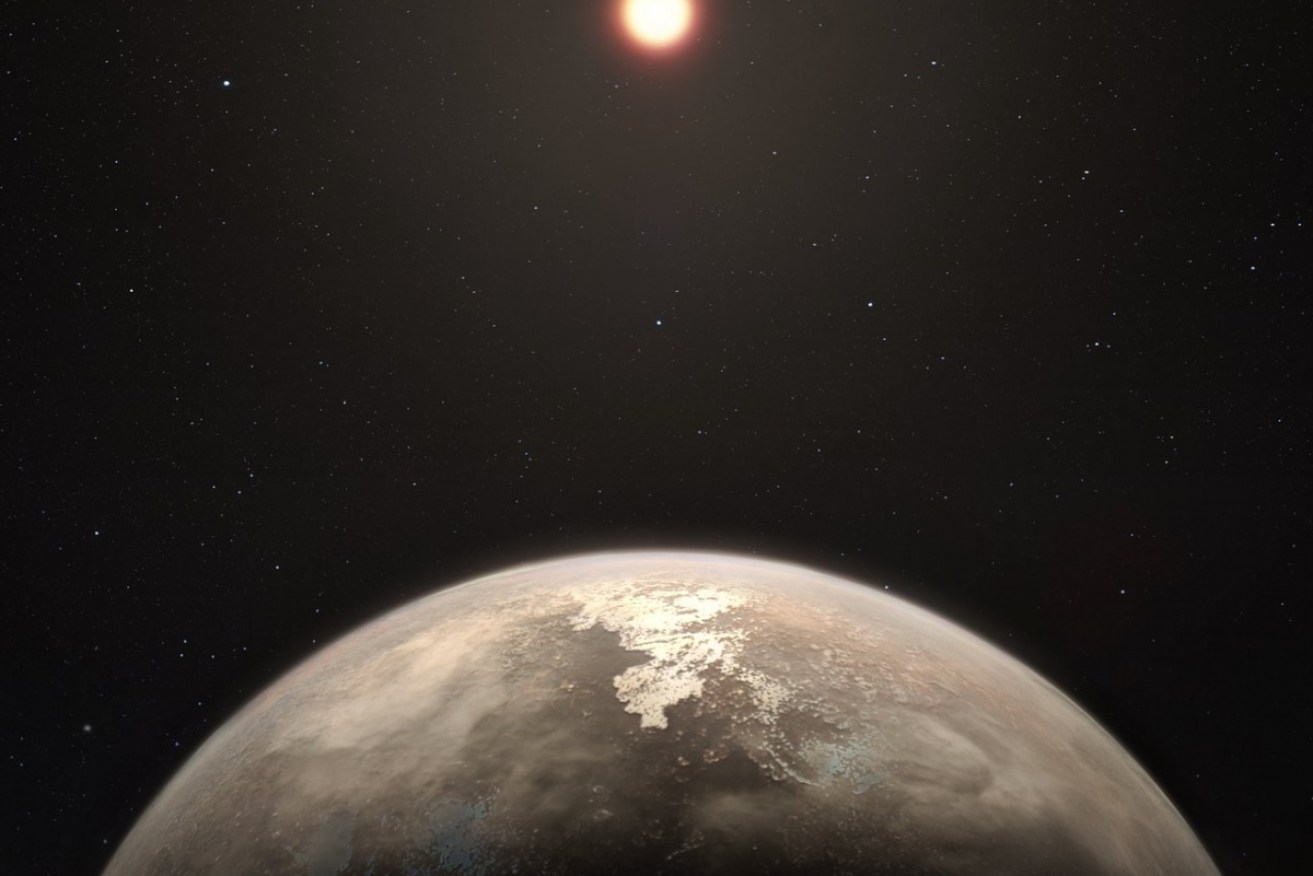Scientists discover Earth-sized planet that could sustain life


Scientists have found a exoplanet that could potentially sustain life. Photo: ESO
A newly found Earth-sized planet has been discovered only 11 light years from our solar system and it could harbour life, scientists say.
Scientists at the European Southern Observatory (ESO) announced on Thursday it had found a new world, now named Ross 128 b, with its High Accuracy Radial Velocity Plant Searcher (HARPS) at the La Silla Observatory in Chile.
And according to scientists, the exoplanet appears to meet some of the basic requirements to sustain life.
Ross 128 b has slightly more mass than Earth, and is believed to be a rocky planet with a solid surface.
The planet orbits its host star, a red dwarf star called Ross 128, around 20 times closer than the Earth orbits the sun. In fact, so close is the orbit that a year on the planet lasts just under 10 days.
The star is much cooler and fainter than our sun so the planet has an equilibrium temperature between -60C and 20C.
It is also the closest ‘exoplanet’ to earth orbiting an inactive red dwarf star – otherwise known as a “quiet star” – which could increase the likelihood of signs of life, scientists say.
The star’s inactivity means the new world is not prone to potentially devastating and life-ending radiation, despite receiving 38 per cent more radiation than Earth does.
“Many red dwarf stars are subject to flares that occasionally bathe their orbiting planets in deadly ultraviolet and X-ray radiation,” ESO said in a statement.
“However, it seems that Ross 128 is a much quieter star, and so its planets may be the closest known comfortable abode for possible life.”
According to University of Geneva astronomer and co-author of the study Nicola Astudillo-Defru, in a cosmic “blink of the eye” the planet will be our closest celestial neighbour.
“Although it is currently 11 light years from Earth, Ross 128 is moving towards us and is expected to become our nearest stellar neighbour in just 79,000 years – a blink of the eye in cosmic terms,” Ms Astudillo-Defru said.
“Ross 128 b will by then take the crown from Proxima b and become the closest exoplanet to Earth!”
What else can we find out?
More research is needed to determine if Ross 128 b has all the conditions required to sustain life, scientists say.
ESO said it will next search for biomarkers such as oxygen within the exoplanet’s atmosphere using its Extremely Large Telescope (ELT).
Astronomers will also study the planet’s composition and chemistry in more detail.
“New facilities at ESO will first play a critical role in building the census of Earth-mass planets amenable to characterisation,” lead author Xavier Bonfils said.
“In particular, NIRPS, the infrared arm of HARPS, will boost our efficiency in observing red dwarfs, which emit most of their radiation in the infrared. And then, the ELT will provide the opportunity to observe and characterise a large fraction of these planets.”
ESO published its full findings in the scientific journal Astronomy and Astrophysics on November 8.








